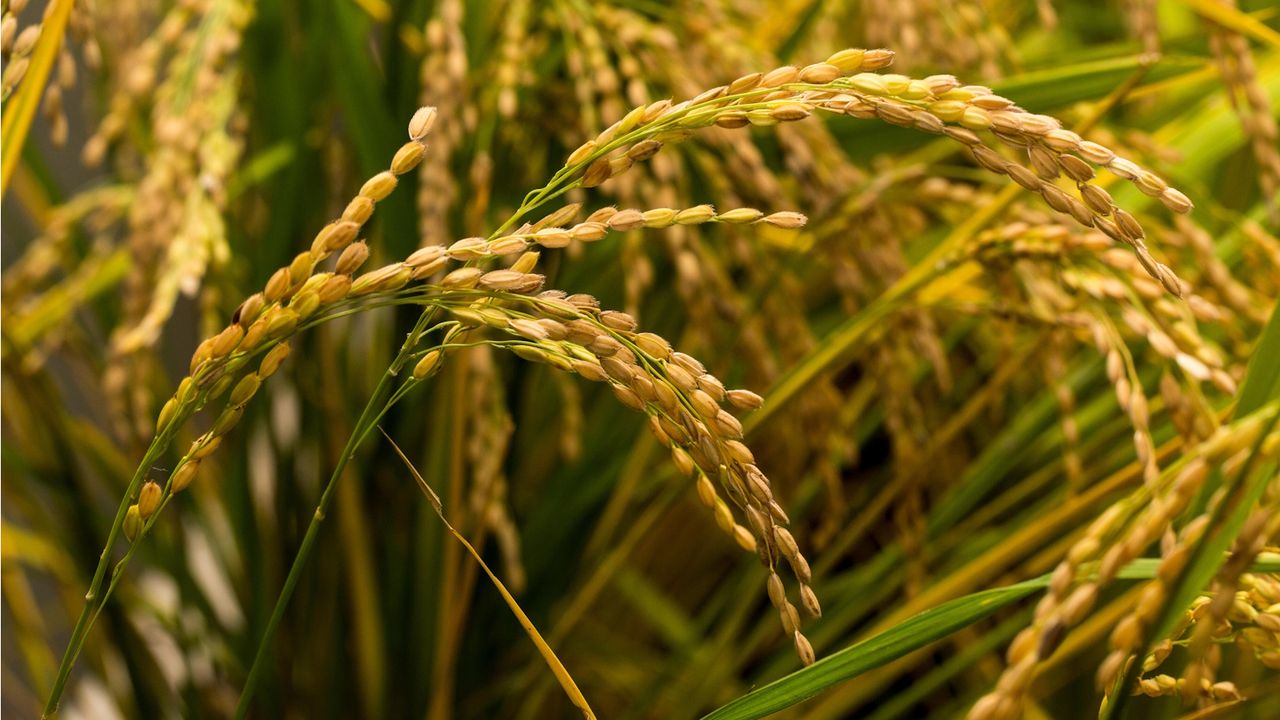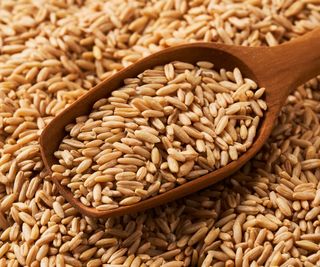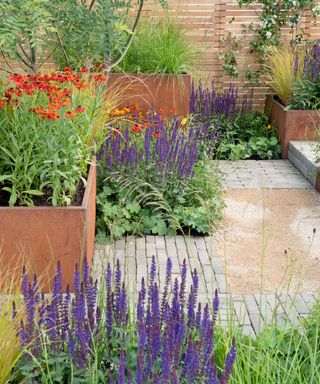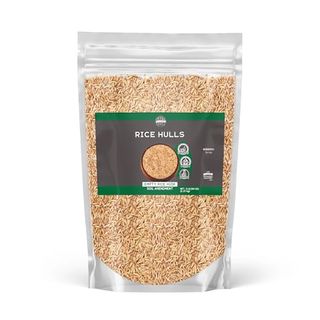What are rice hulls for gardening? An eco expert reveals how to use this by-product to transform your soil structure and plant growth
From improving water retention to providing nutrients, rice hulls are an invaluable soil amendment


All keen gardeners know the importance of having good soil structure that supports healthy plant growth. Drainage and aeration are key to aiding moisture management, and it turns out you can improve them with one affordable ingredient - rice hulls.
If you don't know what rice hulls are, don't fret, not many of us see them. They're a by-product of rice harvesting and can be cleverly repurposed to support soil health and structure by mixing them in to add air pockets, no matter which soil type you have.
While it's more common to use rice hulls in container gardening, one sustainable gardening expert I spoke to says they can be used in compost for borders and beds, too. Here's what she told me about this eco-friendly soil amendment and how to go about using rice hulls for gardening.
What are rice hulls for gardening?

'Rice hulls are the lightweight, papery outer layer of rice grains. They're usually removed during milling and tossed aside before rice ever hits someone’s plate,' explains sustainable gardening expert, Siobhan Shaw.
You're unlikely to see these outer shells of rice unless you enjoy cooking and eating wild rice, which Siobhan notes usually has 'the outer layer intact, giving it that signature dark, earthy look.'
When it comes to using rice hulls for gardening, these little shells are perfect for supporting drainage and improving garden soil structure.
'In eco-friendly gardening ideas, rice hulls quietly do some heavy lifting. They act a lot like perlite or vermiculite, both of which I’ve used to improve soil structure, drainage, and aeration,' Siobhan explains.
It's as simple as getting your hands on rice hulls (from Amazon) and using them as a soil amendment, as you would with perlite (from Walmart) or vermiculite (from Amazon) by mixing it in to your growing medium.
By improving soil structure with rice hulls, your soil's ability to retain moisture and nutrients will be improved. Plus, drainage will be increased and the risk of fungal issues and pests will be reduced.
Not only this, but much like vermiculite, rice hulls have the ability to retain moisture. This helps will moisture management, slowly releasing it to plant roots as needed.
As an extra bonus, rice hulls are biodegradable and will supply a gradual supply of essential plant nutrients, including the macronutrients of nitrogen, phosphorus, and potassium.

Siobhan is the co-founder of Growing to Give, a dynamic global nonprofit dedicated to transforming community-focused food security and agriculture through sustainable farming and gardening practices. Siobhan is a passionate advocate for women's empowerment in agriculture, mentoring women who aspire to careers in the field. Siobhan also continues her decades of podcasting as the host and co-producer of the health and well-being podcast titled Real Talk.
How to use rice hulls for gardening

Using rice hulls as a soil amendment is popular in container gardening or when making your own compost for a potting mix. This is because potted plants need good drainage to prevent root rot and other issues.
'If I were recommending a sustainable, biodegradable way to improve drainage and airflow - especially in containers or raised beds - rice hulls would be high on the list,' says Siobhan. 'They’re renewable, they break down slowly to feed the soil, and they help balance moisture without compacting,' she explains.
To add rice hulls to containers and flower beds, simply mix them in as a soil amendment. It's generally recommended to mix 10-50% rice hulls in potting mix.
Alternatively, it is also possible to use rice hulls for gardening in borders and beds.
You can do this by spreading an even layer of rice hulls on the surface of your soil, around two-inches thick. This should then be gently mixed into at least the top six-inches of soil using essential gardening tools, like a hand tiller (from Amazon).

Use these rice hulls for gardening to improve soil aeration, moisture retention, and drainage.
FAQs
What's the best time of year to spread rice hulls?
While you can use rice hulls as a soil amendment in potting soil at any time of the year, it's recommended to spread rice hulls in borders and beds during spring when you fertilize the soil.
Besides offering a whole host of benefits to your plants, using rice hulls in garden is great way to repurpose something that would otherwise go to waste. That's what puts it on the list of peat alternatives for growing flowers and it's a great zero-waste gardening idea to incorporate in your yard.
Sign up to the Homes & Gardens newsletter
Design expertise in your inbox – from inspiring decorating ideas and beautiful celebrity homes to practical gardening advice and shopping round-ups.

Tenielle is a Gardens News Writer at Homes & Gardens. She holds a qualification in MA Magazine Journalism and has over six years of journalistic experience. Before coming to Homes & Gardens, Tenielle was in the editorial department at the Royal Horticultural Society and worked on The Garden magazine. As our in-house houseplant expert, Tenielle writes on a range of solutions to houseplant problems, as well as other 'how to' guides, inspiring garden projects, and the latest gardening news. When she isn't writing, Tenielle can be found propagating her ever-growing collection of indoor plants, helping others overcome common houseplant pests and diseases, volunteering at a local gardening club, and attending gardening workshops, like a composting masterclass.
You must confirm your public display name before commenting
Please logout and then login again, you will then be prompted to enter your display name.
-
 Pierce Brosnan's backyard chickens follow a growing celebrity trend for 2025 – pet nutritionists say you can follow his example (with these tips)
Pierce Brosnan's backyard chickens follow a growing celebrity trend for 2025 – pet nutritionists say you can follow his example (with these tips)The actor's free-range chickens tap into a popular sustainable movement, similarly followed by the likes of Jennifer Garner and David Beckham
By Megan Slack Published
-
 The kitchen in this historic apartment has an unexpected and utterly unique color palette – it's bold yet surprisingly timeless
The kitchen in this historic apartment has an unexpected and utterly unique color palette – it's bold yet surprisingly timelessWho knew bright red could be such a timeless choice for a kitchen? Take a tour of this bold and brilliant deVOL project
By Molly Malsom Published